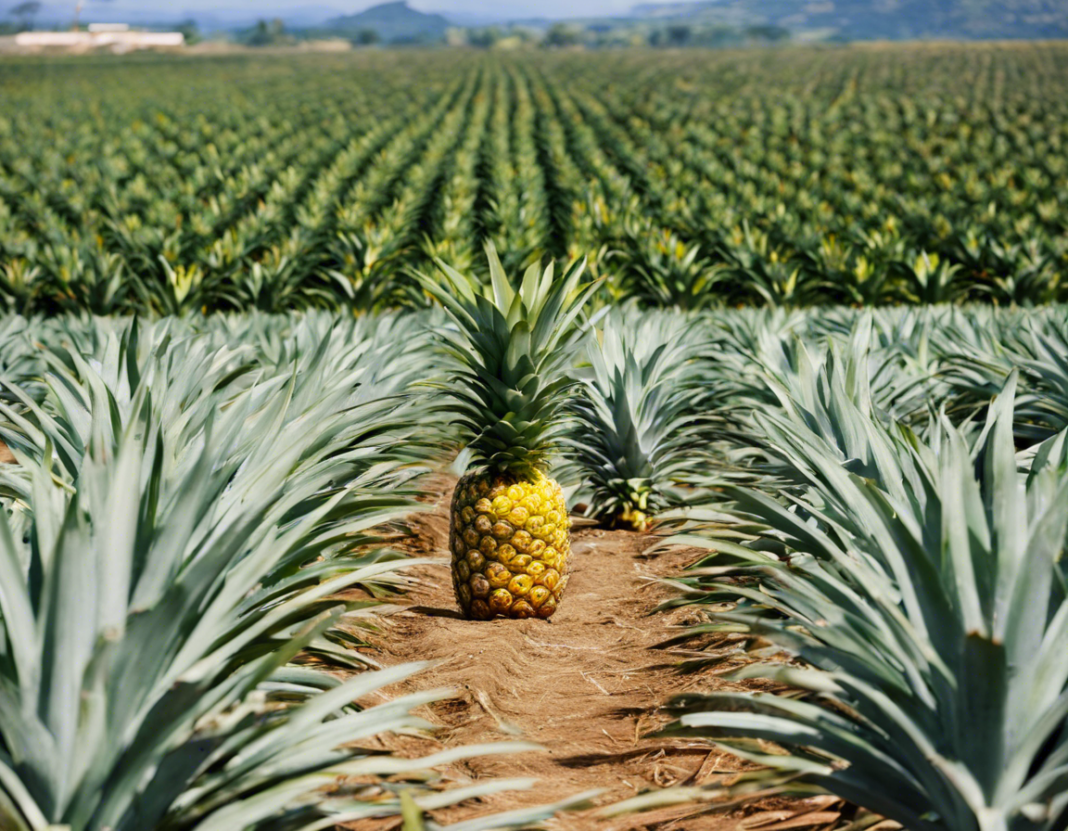Imagine walking through sprawling fields of vibrant greenery, the air filled with the refreshing scent of sweet pineapple. Welcome to the beautiful pineapple fields of Hawaii, a tropical paradise that offers a feast for both the eyes and the taste buds. Hawaii, often referred to as the Pineapple Capital of the World, is renowned for its production of this delicious and nutritious fruit. In this comprehensive guide, we will delve into the world of Hawaiian pineapple fields, exploring their history, significance, cultivation practices, and much more.
History of Pineapple Cultivation in Hawaii
The story of pineapples in Hawaii begins in the 18th century when Spanish explorers introduced the fruit to the islands. However, it was not until the early 20th century that pineapple cultivation truly took off in Hawaii, thanks to James Dole, who established the Hawaiian Pineapple Company (now known as Dole Food Company) in 1901. Dole revolutionized the pineapple industry in Hawaii, turning it into a major export crop that brought economic prosperity to the islands.
Significance of Pineapple in Hawaiian Culture
Pineapple holds a special place in Hawaiian culture, symbolizing warmth, hospitality, and the spirit of aloha. The iconic image of a pineapple is often associated with tropical paradise and leisurely island life. In Hawaii, you will find pineapple motifs adorning everything from clothing to home decor, showcasing the fruit’s cultural significance.
Cultivation Practices in Hawaiian Pineapple Fields
Varieties of Pineapple Grown in Hawaii
Hawaii is known for cultivating several varieties of pineapple, including the popular Smooth Cayenne and Golden Sweet varieties. These pineapples thrive in the warm, tropical climate of Hawaii, developing a unique sweetness and juiciness that sets them apart from other varieties.
Growing Conditions
Pineapples require well-drained soil, plenty of sunlight, and regular watering to thrive. In Hawaii, the volcanic soil provides rich nutrients for the pineapple plants, leading to the production of high-quality fruits. The islands’ consistent temperatures and ample rainfall create ideal growing conditions for pineapple cultivation.
Harvesting Process
Pineapples are typically harvested when they reach peak ripeness, as indicated by their golden color and sweet aroma. In Hawaii, skilled farmers carefully handpick the ripe pineapples, ensuring that only the best fruits are selected for consumption. The harvesting process is a labor-intensive task that requires precision and expertise.
Visiting Hawaiian Pineapple Fields
If you’re planning a trip to Hawaii, a visit to a pineapple farm is a must-do experience. Many farms across the islands offer guided tours that allow visitors to explore the lush fields, learn about the cultivation process, and even taste freshly harvested pineapples. The Dole Plantation on Oahu is a popular tourist destination that offers a glimpse into Hawaii’s pineapple heritage through educational exhibits and fun activities for the whole family.
Health Benefits of Hawaiian Pineapples
In addition to their delicious taste, Hawaiian pineapples offer a wealth of health benefits. Rich in vitamin C, manganese, and antioxidants, pineapples are known for their anti-inflammatory and digestive properties. Incorporating fresh Hawaiian pineapples into your diet can boost your immune system, improve digestion, and promote overall well-being.
Sustainability Practices in Hawaiian Pineapple Farming
Sustainability is a key focus in modern pineapple farming practices in Hawaii. Farmers prioritize environmentally friendly techniques, such as drip irrigation systems, natural pest control methods, and crop rotation, to minimize the impact on the islands’ delicate ecosystem. By embracing sustainable farming practices, Hawaiian pineapple growers ensure the long-term health of the land and preserve it for future generations.
FAQs about Hawaiian Pineapple Fields
Q: What is the best time of year to visit Hawaiian pineapple fields?
A: The peak season for pineapple harvest in Hawaii is from April to June, making it an ideal time to visit the pineapple fields and witness the harvesting process.
Q: Can visitors taste fresh pineapples during farm tours in Hawaii?
A: Yes, many pineapple farms in Hawaii offer tasting sessions where visitors can sample freshly harvested pineapples and enjoy their juicy sweetness.
Q: Are there any pineapple festivals or events in Hawaii that celebrate the fruit?
A: Yes, Hawaii hosts various pineapple-themed festivals and events throughout the year, such as the Waikapu Country Town Celebration on Maui and the Pineapple Festival on Oahu.
Q: What activities can visitors enjoy at the Dole Plantation in Oahu?
A: The Dole Plantation offers a range of activities, including a pineapple garden maze, train rides through the fields, and informational tours about the history of pineapple in Hawaii.
Q: Are there any pineapple souvenirs or products that visitors can purchase in Hawaii?
A: Visitors to Hawaiian pineapple farms can purchase a variety of pineapple-themed souvenirs, including fresh fruit, juices, jams, and handmade crafts.
Explore the enchanting world of Hawaiian pineapple fields on your next visit to the islands and immerse yourself in the rich history and vibrant culture surrounding this beloved tropical fruit. From the sweet taste of freshly harvested pineapples to the stunning beauty of the lush fields, Hawaii’s pineapple farms offer a truly unforgettable experience for all who venture into this tropical paradise.
